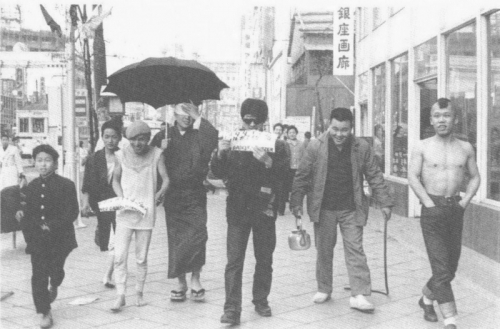During the late 1950s Arakawa created paintings and sculptures, some of which he exhibited at the Yomiuri Independent, a.k.a., Anpan, held annually at Tokyo Metropolitan Art Museum. Around this time, he also took part in nonsensical performances, which art critic Yoshiaki Tōno described as “anti-events.” Together with several other avant-garde artists he formed the Neo Dada who collectively exhibited in Tokyo during which time Arakawa developed a series of mixed-media sculptures later called the ‘Coffin Series’.
These works, made from cement fashioned into forms, reminiscent of bodies cushioned by padded material and set within wooden boxes were both sinister and erotic. Some had metal or electrical parts attached with circles and arrows painted or sculpted onto their surface referencing science fiction and surrealism and evoking the recent memory of war.
In 1960 Arakawa had his first solo exhibition at Tokyo’s Muramatsu Gallery followed by at show at Mudo Gallery in 1961 curated by the art critic Jun Ebara, and was included in Adventure in Today’s Art of Japan at the National Museum of Modern Art, Tokyo. His individual success triggered discord between Arakawa and other members of Neo Dada resulted in him leaving the group and with the help and encouragement of the Japanese poet, art critic, and artist Shūzō Takiguchi he made the move to New York at the end of 1961.

